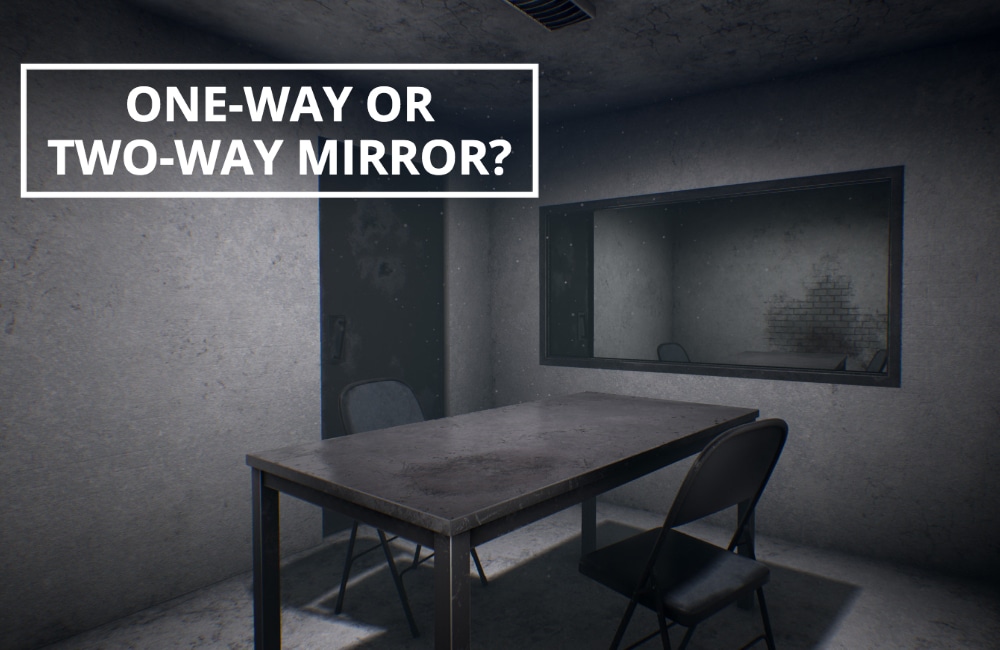
Each week here at the Australian Writers’ Centre, we dissect and discuss, contort and retort, ask and gasp at the English language and all its rules, regulations and ridiculousness. It’s a celebration of language, masquerading as a passive-aggressive whinge about words and weirdness. This week, it’s all smoke and mirrors…
Q: Hey AWC, I’m trying to write a thriller at the moment and I’m having a problem.
A: Have you run out of chalk for the outlines?
Q: No it’s not that.
A: Is your detective washed up but talked into investigating a previous case?
Q: No, but that’s a great idea. Do you think anyone’s done that before?
A: What’s your question?
Q: Oh right. Well, there’s a scene which takes place in a room with one of those see-through mirrors. But I’m not sure whether to call it a “one-way mirror” or a “two-way mirror”.
A: So this is presumably an interrogation room scene?
Q: Ohhh, much better! I’d had it in a focus group room for a new brand of cereal. But I might just make them a serial killer instead!
A: This one is rather curious – because BOTH terms are quite commonly used. In fact, it might be a good idea to actually look at how these things are made.
Q: What, serial killers?
A: No, the mirrors.
Q: Oh, that makes more sense.
A: These kinds of mirrors are really just windows that have been intermittently coated with reflective material on one side. Obviously it needs to still be a window so that people on the non-mirror side can see in.
Q: You say it’s a window. So if it’s not completely reflective, why can’t the cereal killer, ahem, I mean the serial killer, see in to the other side?
A: Good question – and it’s simply about lighting. They make the ‘mirror’ room much much brighter, while it’s quite dark behind the glass.
Q: Ahhhhh.
A: You see exactly the same effect in cities. During the day, a high rise building might have mirrored glass reflecting out, but at night, when the lights are on inside and it’s dark outside, you can easily see in.
Q: Clever! But I still don’t get this one-way, two-way thing.
A: Yeah it’s confusing, but it’s been that way since they were first developed in the 1940s – with both names in use from the start. It comes down to what’s being described. In “one-way mirror” it refers to just one side being mirrored. Whereas “two-way” refers more to the two different ways you view – a mirror on one side and as a window on the other.
Q: It all seems rather illogical. Like when people think doing a ‘backflip’ on an issue is the same as doing an ‘about face’ on it. But if you do a backflip, you actually end up facing the same way!
A: Good point, and it’s another one to put away in the “English is weird” file.
Q: What do you think would happen if I did a backflip in front of a two-way mirror?
A: You’d probably still be wanted for questioning…
Q: Fair enough. Well, for me personally, a one-way mirror just seems like a normal bathroom mirror.
A: True, and in that case you might feel better calling it a “two-way mirror”. Just know that both names evolved side by side and while “one-way mirror” is currently the more popular term, you’re free to use either – just be consistent!
Q: While we’re reflecting on life, what about the term “smoke and mirrors”? Where did that come from?
A: The concept comes from classic illusionists who would use smoke and mirrors to trick the eye. But the saying has actually only been around since the late 1970s – used figuratively as a way of embellishing the truth. Politicians love it.
Q: Thanks for shedding light on the subject. But not too much light, or everyone would see you through the glass…
If you have a grammar gripe or punctuation puzzle that you’d like our Q&A to explore, email it to us today!
About us
Contact us